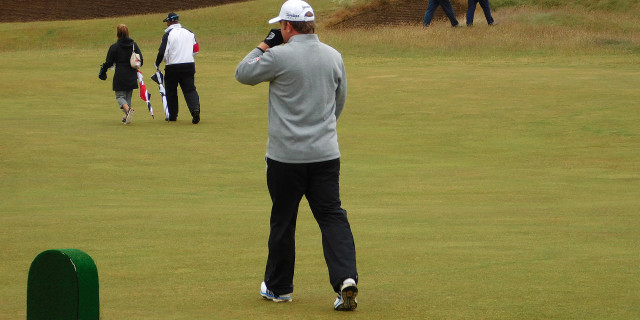
Slow Play Rules Exist on the PGA Tour
JB HOLMES’ funereal performance in winning the Genesis Open at Riviera has brought the PGA Tour’s pace of play policy back into the spotlight. The first thing that may surprise you, given the apparent reluctance of referees to administer penalties, is that there actually is a pace of play policy!
It begins by invoking Rule 5.6b, which stipulates that pace of play should be “prompt.” Huh! Some chance. Each course has a respective Pace of Play chart - this is entirely understandable since some courses are more difficult than others. What you may not know is that the first group out is considered to be out of position if they exceed the allotted time to play. Subsequent groups are considered out of position if they also exceed the allotted time to play, if they reach an open par three or par four, or if they all fail to tee off a par five before the hole is open and free of players ahead.
Interestingly, the rules committee reserves the right to time an individual player regardless of whether his group is out of position. When a group is deemed out of position, the players will receive a warning. At that point, the committee will start monitoring individual players to decide if they need to be individually timed, in the event the group does not get back into position. Players are notified by the committee when they are being timed. This can happen on any hole and at any time, including the finishing holes of a tournament. Well, that’s the theory at any rate.
Featured Content
Players Like JB Holmes Are Killing Golf
So how long are tournament golfers given to play a shot? The PGA Tour Players Handbook notes that golfers are allowed 40 seconds to hit a shot, and that includes time spent determining yardage. Timing begins when it is his or her turn to play without interference or distractions. On the putting green, timing begins after a player marks, lifts, cleans and replaces his ball. He can also repair ball marks and remove loose impediments from his line of putt while off the clock - it seems to be a matter of common sense that they would do this while fellow competitors are lining up their own putts, but we all know this does not happen.

Exceptions to the 40-second rule include the first player to play a stroke on a par three, a second stroke on a par four or par five, a third stroke on a par five, around the putting green and on the putting green. In these cases, the player is allotted an extra 10 seconds, for 50 seconds total.
For the first bad time, there is no penalty — only a warning. A second bad time warrants a one-stroke penalty, a third is two strokes, and a fourth, disqualification. As an additional deterrent, there are also monetary penalties that begin with the second bad time.
So there you have it. You now know the pace of play rules. Referees also know the pace of play rules. So answer one question: when was the last time that you saw a tournament professional take just 40 seconds to strike a putt? If you doubt it, when you are settled down in front of the television this weekend, get your stopwatch going from the second that a professional finds that it is turn to putt - with the notable exceptions of Brooks Koepka and Brandt Snedeker - and see how long it takes them from the moment that they begin prowling around the green until they finally get over the ball and hit the damn thing.
I love golf and I love watching the leading players in the heat of battle. But I have an admission. So bored was I with the length of time it took Holmes to get through that final round at Riviera that I actually switched off. I wonder how many others did exactly the same thing?

Be part of the action with a selection of unique golf tournament experiences, from playing in a pro-am with the stars to watching the action at golf’s most illustrious events. Whether it’s the Masters or The Open, The Ryder Cup or WM Phoenix Open, build your own bespoke package with the experts at Golfbreaks.com.
Tags: slow play PGA Tour FedEx Cup









